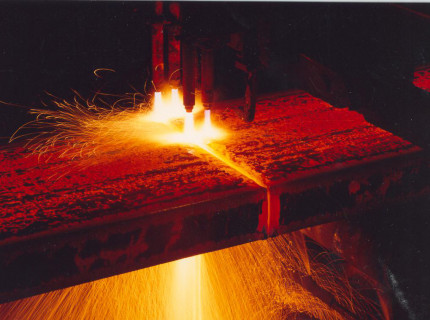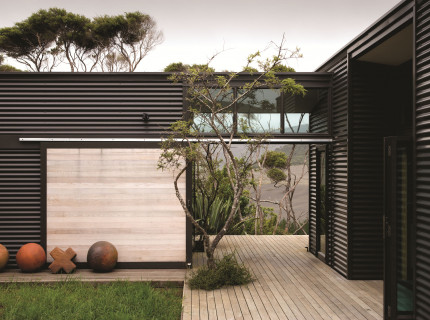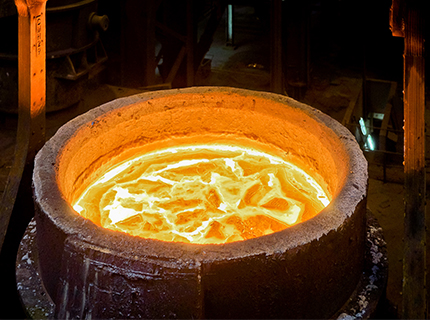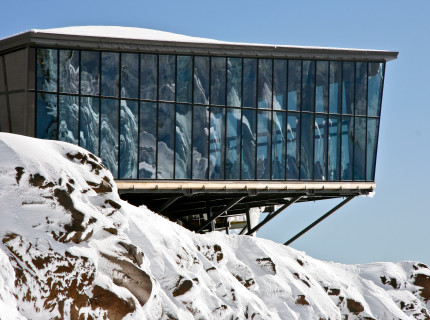ZINCALUME® STEEL GUIDELINES FOR USE
Working with ZINCALUME® steel
ZINCALUME® steel and galvanised products have very similar working characteristics. However, you should be aware of a few characteristics of ZINCALUME® steel.
Protection at Cut Edges
At the cut edge, ZINCALUME® steel provides similar protection to galvanised coatings. The zinc/aluminium alloy coating of ZINCALUME® steel provides galvanic protection to bare steel exposed at cut edges and by deep scratches.
Passivation
Surface passivation enhances the protection of the galvanised and ZINCALUME® steel product during storage, forming, handling and fixing. It largely eliminates the need for rollforming oils, offers improved wet stack corrosion resistance and generally makes the product more mark resistant during handling and fixing.
Handling and Storing
The normal storage care, site cleanliness and installation procedures used for GALVSTEEL® products apply to ZINCALUME® steel products. Although passivation provides improved protection during storage, care should still be taken. If ZINCALUME® steel becomes wet during storage, the product should be immediately separated, wiped with a clean cloth and placed in a position where it can completely air dry.
Forming
As with GALVSTEEL®, ZINCALUME® steel is suitable for all but the most severe forming operations. With ZINCALUME® steel, the passivation system acts as a dry lubricant and in most cases will eliminate the need for additional lubrication in most forming operations. Solvent-based lubricants must not be used.
Welding
ZINCALUME® steel can be satisfactorily welded using the following techniques:
- GMA (Gas Metal-Arc, often called MIG)
- Resistance welding (spot or seam)
- MMA (Manual Metal-Arc)
When welding ZINCALUME® steel, excessive weld currents must be avoided. With correct welding procedures, sufficient coating is normally left on the ZINCALUME® steel sheet to protect the substrate from corrosion.Weld repair should be carried out by coating with a zinc-rich paint. Adequate ventilation must be provided even though the welding of ZINCALUME® steel gives off fewer fumes than galvanised steel.
Joining and Sealing
ZINCALUME® steel cannot be soldered. Join ZINCALUME® steel in the same way as recommended for COLORSTEEL® prepainted steel products. Use a neutral cure silicone sealant in conjunction with mechanical fasteners such as blind rivets. Care should be exercised in the choice of rivets.
Aluminium rivets are recommended. Monel, stainless steel and carbon steel rivets must not be used.
Fasteners
Most fasteners complying with the corrosion requirements of Australian Standard AS3566 "Screws – Self-drilling for the building and construction industry" are suitable for use with ZINCALUME® steel.
- Stainless steel fasteners should not be used with ZINCALUME® steel or COLORSTEEL® prepainted steel products in any environment
- Lead headed nails must not be used
- Use only low carbon (< 15%) non–conductive sealing washers
Flashings and Accessories
Flashings and ridge capping should be manufactured from the same coating system as used for the main roof area to ensure equal durability for COLORSTEEL® prepainted steel and ZINCALUME® steel products. Extended ridge caps, soft zinc, or practices such as cutting and notching are recommended.
Where penetration flashings are required, neoprene or silicone rubber, EPDM aluminium or soft zinc all give excellent performance.
Marking ZINCALUME® steel
Black lead pencils must never be used for marking GALVSTEEL®, ZINCALUME® steel or COLORSTEEL® prepainted steel products. The carbon in the pencil promotes corrosion which will etch the surface, leaving a permanent mark. Use a pencil of any colour.
Information to Help You Avoid Problems
In almost all applications, ZINCALUME® steel will out-perform galvanised steel. There are however, a small number of applications for which galvanised steel is more suitable. ZINCALUME® steel must not be used for:
- Formwork in contact with wet concrete
- Products to be embedded in concrete. However, where very small volumes of concrete are involved (eg splashes) which are able to cure quickly, there is little corrosive effect
- Animal shelters where ammonia levels are constantly high
- Fertiliser storage sheds and containers
- Culverts, or where ZINCALUME® steel material is buried in the ground
- Water tanks
- Highly alkaline environments (eg cement manufacture)
- Coolroom products
Where ZINCALUME® steel shows its versatility
The attributes of ZINCALUME® steel ensure its suitability for many applications. Its ability to take on a variety of colours and shapes will provide constant inspiration for product designers in virtually every field.
Maintenance
All roofing and cladding products are subject to the cumulative effects of weather, dust and other deposits. Normal rain washing will remove most accumulated atmospheric contaminants from roofs. For wall cladding, manual washing every 3 to 12 months, depending on the paint system, is recommended in moderate to very severe environments to prevent accumulation of dirt, debris or other material not removed by rain washing.
For areas that do not receive any or adequate rain washing (called unwashed areas) such as soffits, wall cladding under eaves, underside of gutters, fascias, sheltered areas of garage doors and unwashed roof areas, more extensive manual washing is required. Similarly, other High Risk areas, around flues, under television aerials or overhanging trees and sites prone to mould, lichen, bird droppings or debris, need to have extensive manual washing.
Regular washing of steel products increases the durability by reducing attack from airborne salts and pollutants. Steel surfaces should be manually washed with water and a sponge or a soft nylon-bristled brush. For large areas it may be more appropriate to use water blasting at pressures up to 20 Mpa.
If New Zealand Steel Limited products are maintained according to the following recommendations, the requirements of the New Zealand Building Code B2 for 15 year durability for roofs and exterior walls will be met or exceeded.
Note:
- The New Zealand Building Code durability requirement does not include aesthetic appearance.
- The New Zealand Building Code requires a durability of 15 years minimum (with maintenance) for roofing, including valleys, and wall cladding products. This means no moisture penetration due to product failure.
- The New Zealand Building Code requires a durability of 5 years minimum (with maintenance) for rainwater products, gutters and downpipes. This means no perforation due to product failure.
- New Zealand Steel Limited products are designed to exceed the New Zealand Building Code B2: durability requirements. Continued maintenance and overpainting will greatly extend the ultimate life of all products.
- Where a 50 year durability is required OR where a product is to be used in aggressive internal environments, New Zealand Steel Limited should be consulted.
- In Industrial Environments, the type of pollution generated may alter the above recommendations.
If in doubt, consult New Zealand Steel Limited. The maintenance information in the overview page is for guidance only. Each proprietary building product should carry its own manufacturers’ recommendations for usage.
New Zealand Steel Limited will not accept responsibility for proprietary roofing and cladding products which do not conform to our recommendations for manufacturing, environmental use or maintenance.




